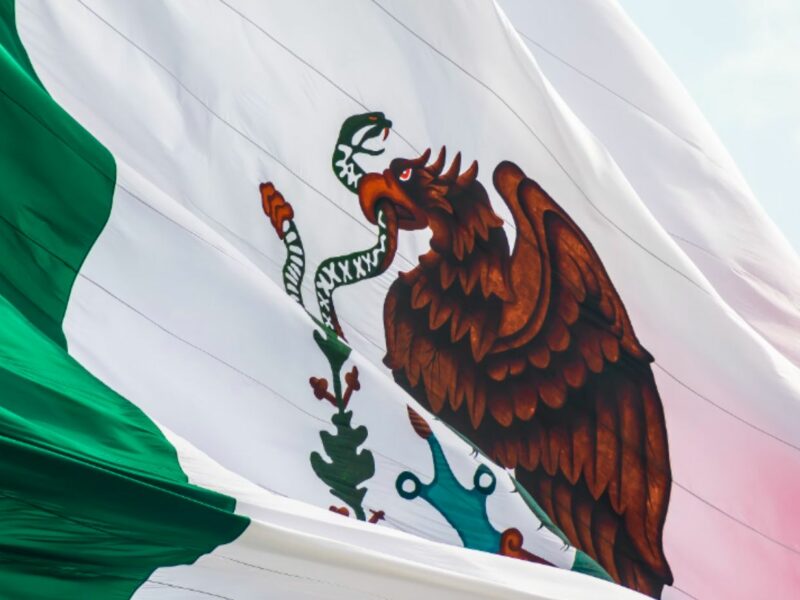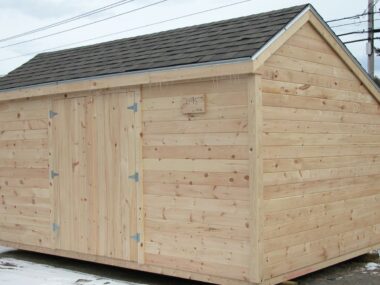Do you want to change your surroundings? Are you prepared to go south of the border on a new adventure?
Moving to Mexico may be your ticket to an exciting cultural immersion and lifestyle transformation. From beach towns to bustling cities, the diversity of landscapes and experiences waiting for you across Mexico are breathtaking.
But moving abroad can be very difficult, particularly when adjusting to a new language and culture. Navigating a move across international borders, adjusting to a foreign way of life, and settling into an unfamiliar place requires careful planning.
In this article, we’ll review everything you need to know to make a smart choice about moving to Mexico.
Can Americans Legally Live in Mexico?
By law, American tourists can stay in Mexico as visitors for up to 180 days. For seasonal residents or retirees, around six months is sufficient time in the country.
Some stay longer by traveling on “visa runs” to other countries and then back to Mexico. This can be a good option if you are unsure about permanently living in Mexico and want more time to decide. However, as with most countries, you cannot work while in Mexico as a tourist.
If you want to live in Mexico long-term, you can pursue a temporary or permanent resident visa. The first step in the application process is to contact the Mexican embassy or consulate closest to you at home. You will be expected to complete an application, present sufficient financial support documentation, and participate in an interview.
There are two main ways to qualify for a temporary or permanent visa. One is by demonstrating a certain monthly income, and the other is by providing proof of sufficient savings over an extended period.
In both cases, your finances must be documented through 6-12 months of bank statements. Specific income and savings requirements depend on Mexico’s minimum daily wage of about 207 pesos in 2023. You need higher amounts for a permanent visa than for a temporary one. Additional documentation may be required if applying with a spouse or children.
One challenge is that application requirements can vary between Mexican consulates. Your local office may have different financial standards or additional documentation expectations. You may only qualify for a permanent visa if you are over 60 and have a pension income. It’s best to contact the specific consulate handling your application to ensure you meet all their criteria.
Securing Housing in Mexico
Mexico offers a wide range of living options for both locals and expatriates. Having some Spanish language skills is advantageous for finding the best deals on rentals. Many property owners are open to negotiation, particularly when dealing directly with tenants rather than through real estate agents.
Here are some of the popular expatriate destinations:
1. Playa del Carmen
2. Tulum
3. Puerto Peñasco
4. Mazatlán
5. Mexico City
Emerging Hotspots for Expatriates
Mérida, Capital of Yucatán State
Mérida is located inland on the Yucatán Peninsula, just 40 minutes from the beaches of Progreso. As the capital of Yucatán State, Mérida has a population of around 780,000 people in the city and 1.2 million in the surrounding metro area. It is known for its safety, as Yucatán is considered the safest state in Mexico by the US Department of State.
Mérida offers a rich cultural scene, especially in the historic Centro district. Despite the hot and humid climate, the city offers numerous free activities for residents and visitors.
Los Cabos, Baja California Peninsula
Los Cabos includes the cities of Cabo San Lucas and San José del Cabo, and the Corridor route connects them. Los Cabos attracts many US expatriates who seek safety, affordability, and modern amenities.

Cabo San Lucas is widely recognized for its marina, entertainment, and nightlife. San José del Cabo, on the other hand, is well known for its culinary and cultural scenes. Both areas feature high-quality medical facilities, family-friendly resorts, and spas. According to Del Mar Los Cabos, popular activities in Los Cabos include deep-sea fishing and ATV adventures.
If you want upscale accommodations in Los Cabos, consulting luxury Cabo real estate listings is a great idea. They can provide all the detailed information you need.
Puebla
Puebla is located at a higher altitude inland. It has a rich cultural history and is a UNESCO World Heritage site. The city offers museums, theaters, parks, and music festivals. Puebla has a mild climate year-round. Living costs are also very affordable, with studio apartments ranging from $300-USD 600 per month. It also has efficient public transportation and a pedestrian-friendly downtown. Puebla is known for its safety and low crime rates.
Expenses in Mexico City
The typical monthly wage for residents in Mexico City is around 44,600 Mexican pesos. However, international residents often live and work here while employed by foreign companies.
Some estimated budgets for common expenditures in Mexico City include:
- Housing: Around USD 822 monthly to rent a one-bedroom apartment in a central urban neighborhood. Property values average $202,000 for home purchases.
- Living Costs: Without rent, $2,672 for a family of 4 people or $808 for an individual to cover other necessities.
- Utilities: Roughly $52 total spent monthly on gas, water, and electricity services.
- Internet: Broadband access costs about $27 per month on average.
- Transportation: Public transit is approximately $20 to cover monthly transportation costs.
- Groceries: Food grocery bills range from $200-300 per person monthly.
Healthcare Considerations
Access to quality healthcare is an important consideration when moving to Mexico. While medical costs are lower than in other countries, a serious illness or injury could prove financially devastating without insurance. Thankfully, private health insurance is available to help you cover the costs.
When choosing a plan, be sure to compare options from multiple providers. Consider factors like monthly premiums, deductibles, coverage limits, accepted doctors and facilities, and exclusions for pre-existing conditions. It’s also best to have insurance early, as coverage may be difficult to obtain once you reach 70.
Mexico’s public healthcare system, IMSS, provides more affordable care. However, facilities and wait times can be lacking compared to private options. IMSS may also run short on medications at times. Delays in treatment for non-life-threatening issues are common.
Cash savings for medical expenses provide valuable financial protection in Mexico. For Americans eligible for Medicare, it can be a backup plan once enrolled. Due to underwriting standards, some insurance companies will be more accommodating than others to those with pre-existing illnesses.
When budgeting healthcare costs as an expat, carefully review coverage details. Consider scheduling a telehealth consultation with an English-speaking doctor based in Mexico, especially for managing ongoing conditions. This can also assist in estimating long-term prescription or treatment expenses.
How Does Mexico’s Educational System Work?
Mexico’s education system is focused on providing basic schooling for all children. Primary school lasts from 6 to 12 years. From 12 to 15, students choose between technical or college-preparatory programs for lower secondary school.
The upper secondary school spans from ages 15 to 18. While literacy rates are high, quality varies significantly between public and private options. Spanish is taught alongside English as the major language of teaching at many international schools attended by expatriate families.
Beyond secondary school, Mexico offers many opportunities for post-secondary study. Over seven hundred public and one thousand private universities offer degree programs.
Some top institutions highly regarded for academics include the National Autonomous University of Mexico, Tecnologico de Monterrey, and Benemerita Universidad Autonoma de Puebla. Other notable institutions are the Universidad Autónoma de San Luis Potosí and the Metropolitan Autonomous University.
Whether starting or continuing their education in Mexico, students can access affordable quality schooling from kindergarten through graduate levels.
FAQs
Q1: Which Area in Mexico has the Highest Concentration of U.S. Expatriates?
A1: The region surrounding Lake Chapala, located in the state of Jalisco, is home to the largest community of American expatriates in Mexico.

This area attracts diverse foreign residents due to its picturesque homes and stunning natural environment around Mexico’s biggest lake.
Q2: Which Mexican City is Considered the Most Influenced by American Culture?
A2: Often considered the most Americanized metropolis in Mexico, Monterrey is the country’s third most populated city. It is a significant industrial hub with the greatest national per capita income. It is also an important economic link between Mexico and the United States.
Q3: Are Americans Allowed to Purchase Real Estate in Mexico?
A3: Yes, foreign nationals can legally acquire property in Mexico. Non-citizens can directly own property Outside restricted zones, which extend 50 km from coastlines and 100 km from international borders. They are subject to the same duties and rights as Mexican citizens.
Ultimately, relocating to a new country is a big life decision that requires thorough preparation. However, Mexico presents an excellent option for those seeking an affordable lifestyle with cultural immersion opportunities.
From beach towns to bustling cities, diverse landscapes and experiences await nationwide. With proper planning to address logistics like visas, housing, healthcare, and education, an international move to Mexico could open the door to new adventures and lead to new connections and transformations.






